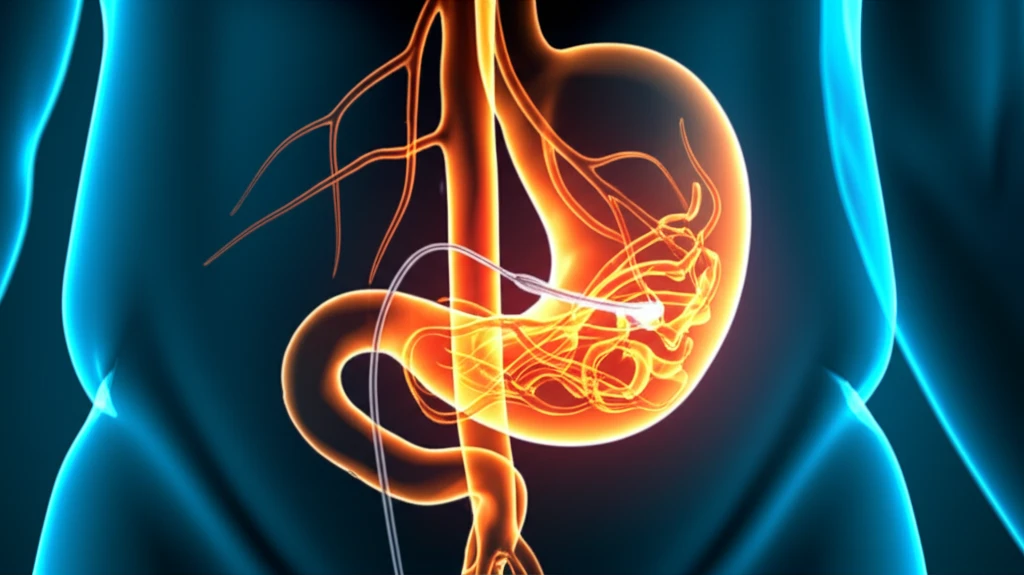
Unstoppable Vomiting? How Targeted Nerve Therapy Can Help
"Discover how a novel endoscopic ultrasound technique offers new hope for those suffering from severe, intractable vomiting due to pancreatic cancer."
Severe vomiting can significantly impact the quality of life for individuals battling advanced abdominal cancers, particularly pancreatic cancer. This relentless vomiting often persists despite various medications and supportive care, leaving patients and their families feeling helpless. Traditional approaches may not always address the root cause, leading to frustration and a search for alternative solutions.
A recent case study sheds light on a promising technique called endoscopic ultrasound-guided celiac ganglia neurolysis (EUS-CGN). This minimally invasive procedure targets the celiac ganglia, a cluster of nerves in the abdomen that play a key role in transmitting pain and other signals from abdominal organs. By carefully injecting medication to block these nerves, EUS-CGN aims to disrupt the vomiting signals and provide much-needed relief.
This article will explore the details of this innovative approach, examining how it works, who might benefit from it, and what the future holds for managing intractable vomiting in cancer patients. We'll break down the medical jargon and present the information in an accessible way, empowering you to understand this potential treatment option and discuss it with your healthcare team.
EUS-CGN: A Targeted Approach to Vomiting Relief

The celiac plexus is a network of nerves located in the upper abdomen, near the celiac artery. It acts as a major communication pathway between the abdominal organs and the brain. In cases of pancreatic cancer, the tumor can irritate or compress these nerves, leading to a cascade of signals that trigger nausea and vomiting.
- Precision Targeting: EUS allows for precise visualization and targeting of the celiac ganglia, minimizing the risk of damage to surrounding tissues.
- Minimally Invasive: Unlike traditional surgery, EUS-CGN is performed through an endoscope, resulting in less pain, a shorter recovery time, and reduced risk of complications.
- Potential for Significant Relief: By blocking the nerve signals, EUS-CGN can significantly reduce or eliminate vomiting, improving the patient's quality of life and allowing them to better tolerate cancer treatments.
Hope for Intractable Vomiting: What This Means for Patients
Intractable vomiting can be a devastating symptom for individuals with advanced cancer, impacting their ability to eat, maintain their strength, and participate in daily activities. EUS-CGN offers a potential solution for those who have not found relief with traditional anti-nausea medications.
While EUS-CGN is not a cure for cancer, it can significantly improve a patient's quality of life by alleviating a debilitating symptom. This can allow them to better tolerate cancer treatments, maintain their nutritional status, and enjoy a greater sense of well-being.
If you or a loved one is experiencing severe, intractable vomiting due to pancreatic cancer or another abdominal cancer, talk to your doctor about whether EUS-CGN might be an appropriate treatment option. Further research is ongoing to determine the long-term effectiveness and optimal use of this technique, but the initial results are promising and offer hope for those seeking relief.
